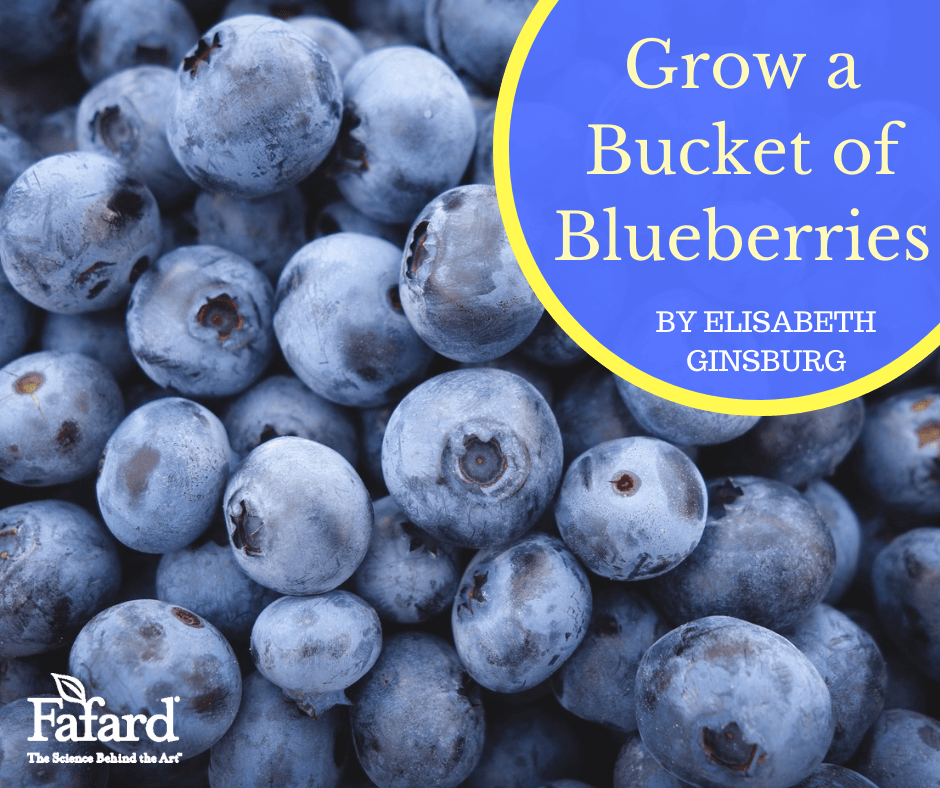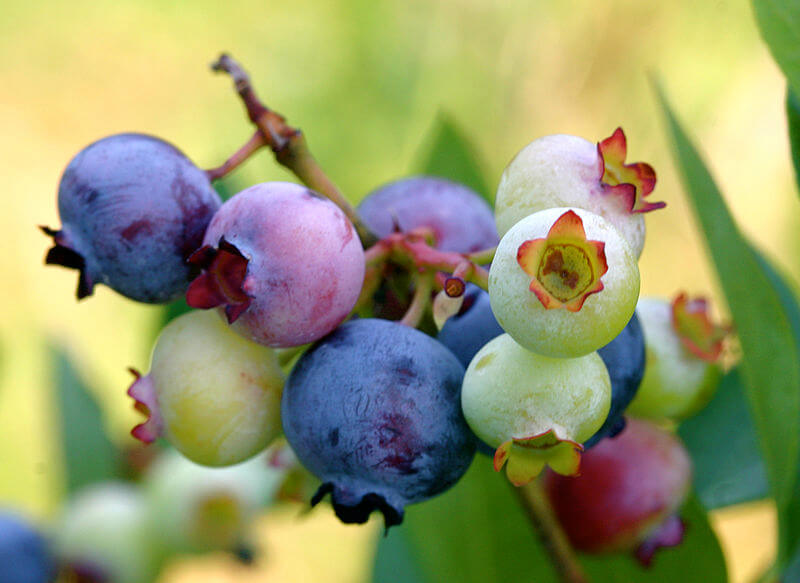
Whoever claimed that life is just a bowl of cherries was seriously misinformed. Life, at least a good life, should be more like a bucket of blueberries—sweet, plentiful and full of good things.
The list of blueberry virtues goes on and on. Given acid soil, reasonable moisture, and sunshine, blueberries can grow about anywhere, as long as you chose a variety congenial to your climate. The pale pinkish spring flowers are extremely pretty in the garden and the fine foliage turns bright red before leaving the scene in the fall. If you—or the birds—don’t eat them all, the waxy berries are highly decorative. In one public garden, a double row of highbush blueberries frames a wide grass allée, an old-world design idea worked out with a native New World shrub
Blueberries have never really gone out of fashion, but they are even more modish now because of their nutritional benefits—lots of antioxidants, plus helpful fiber and useful amounts of vitamins A and C. They also taste a lot better than vitamin pills.
Blueberry Types

To know blueberry types is to love them even more. Lowbush blueberries (Vaccinium angustifolium) are the wild blueberries native to eastern Canada and New England. Small and intensely flavorful, lowbush varieties are borne on low, spreading shrubs. They are sometimes harvested commercially and frequently harvested by eager berry pickers. Highbush blueberries (Vaccinium corymbosum) are the titans of commercial production, but can also grow well in home gardens. The shrubs can be large, topping out at six to twelve feet tall and nearly as wide. These are hardy from USDA Hardiness Zone 3 through Zone 7, depending on variety, and produce big, blue fruits from July through August. Their relatives, southern highbush blueberries, have been bred for warmer climates and include varieties like ‘Avonblue’ and ‘Southland’.
Another good blueberry species for southern climates is the whimsically named rabbiteye blueberry (Vaccinium ashei). While their namesake animals may be relatively small, rabbiteye bushes can grow up to eight or ten feet tall. Home growers can choose from many available cultivars.
And those home growers can harvest buckets of blueberries no matter whether the available space is a standard garden bed, raised growing area or even a large container. In recent years, with more consumers crying for small-space and container varieties, breeders have come up with dwarf blueberries, like the bushy Blueberry Glaze™, which grows only two to three feet tall, with a neat, mounding habit. Container growing is also useful for blueberry lovers with alkaline soil.
Planting Blueberries

To get growing, read plant tags carefully to ensure that you have sufficient space for mature height and width of the variety you choose. If you live south of USDA Zone 7, make sure that your blueberry will receive enough “chill hours” to fruit successfully in your garden. Your local cooperative extension agent should be able to help with that, but chances are, if the blueberry variety is on sale in a nursery near you, it will probably survive in your area. If you are ordering from a catalog or online vendor, call and ask about climate-suitable blueberry choices.
If you are planning to plant your blueberry bush in a container or raised bed, fill with a quality medium like Fafard® Ultra Container Mix with Extended Feed. The sphagnum peat moss content in the mix provides the acidity that blueberries crave.
Before you plant anywhere, make sure that your chosen site receives five or six hours of daily sunlight. Sink the root ball so that its top is level with the top of the planting hole. Water in the young blueberry, and once it is planted, mulch with two inches of organic material, arranged doughnut-style, so it does not touch the blueberry canes. Water regularly while the plant establishes itself.
Blueberry Care
Experts advise pruning off the flowers of your blueberry in the first year, so the plant puts all its energy into growth. This may not be as necessary with dwarf varieties. Water during dry spells, especially with container-grown bushes. Since birds and sometimes small mammals love blueberries as much as humans, cover the shrub with netting as soon as the green berries start to take on a blue cast. Harvest your berries when they are deep blue and come off easily, checking the plant every couple of days for additional ripe berries. If you can resist eating the blueberries out of hand, use them within a few days or freeze for later.
In the fall, fertilize the shrubs according to manufacturer’s directions with a product designed for acid-loving plants like azaleas and rhododendrons. Highbush types should be pruned in late winter to eliminate dead branches and thin out old wood. Cutting back one old cane (stem) for every new one keeps the blueberry healthy and helps ensure a good harvest each year.
Author Jacquelyn Mitchard said, “You’ll never regret eating blueberries or working up a sweat.” You can argue about the sweating part, but just about everyone can agree on the berries.





